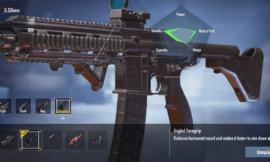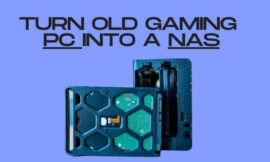Have you ever wondered how typing could become an art form? Or how a keyboard could be more than just a tool but an experience in itself? If you are looking for a keyboard that can enhance your typing and gaming performance, quality, and aesthetics, you should consider getting a mechanical keyboard. Mechanical keyboards are keyboards that use physical switches under each key to register the input, unlike membrane keyboards that use rubber domes and electrical circuits. In this article, I will explain what makes mechanical keyboards different from other keyboards, why they are the best choice for anyone who values typing quality, performance, and aesthetics, and how to choose the best one for your needs. I will cover the different types, sizes, features, and options of mechanical keyboards, as well as provide some examples and recommendations. But before we dive into the details, let’s first understand the history and evolution of mechanical keyboards.
Mechanical Keyboards: The Ultimate Typing Experience
If you want to take your typing to the next level, you should try a mechanical keyboard. Unlike membrane keyboards, which use rubber domes and electrical circuits, mechanical keyboards use individual switches for each key. These switches have different mechanisms and characteristics, such as linear, tactile, or clicky, that affect the feel and sound of the keys. By using a mechanical keyboard, you can enjoy a more responsive, accurate, and satisfying typing experience. My personal preference for typing is the Keycron V5.
Mechanical Keyboard Sizes:
One of the first things you need to consider when choosing a mechanical keyboard is the size and layout. There are various options available, ranging from the full-size boards with 104 keys to the compact 60% versions with only 61 keys. Each size and layout has its advantages and disadvantages, depending on your preferences and ergonomic needs. For example, full-size keyboards offer more functionality and convenience, but they also take up more space and may cause wrist strain. On the other hand, 60% size keyboards are more portable and minimalist, but they also lack some keys and features that you may need. In this section, we will explain the different types of mechanical keyboard sizes and layouts, and help you find the best one for you.
Mechanical keyboards come in various sizes and layouts, each offering different combinations of keys and functionalities. Here are some common sizes and layouts to help you choose the right one for yourself:
- Full-Size Keyboards: These are the most traditional keyboards with a standard layout containing all keys, including a number pad on the right side. They are great if you frequently use the number pad for data entry or calculations. In my opinion, the best full-size keyboard is the Keycron V6.
- Tenkeyless (TKL) Keyboards: TKL keyboards omit the number pad, resulting in a more compact design. They are popular among gamers and users who want more desk space or prefer a more centered typing position. In my opinion, the best tenkeyless keyboard is the Keycron V3.
- Compact Keyboards (60% – 75%): These keyboards are even smaller and eliminate additional keys beyond the basic typing and navigation keys. A 60% keyboard usually retains only the main typing keys, while a 75% keyboard adds a few extra keys like arrows and function keys in a more condensed layout. In my opinion, the best compact keyboard is the ASUS ROG Falchion Wireless Gaming Keyboard.
- 40% Keyboards: These keyboards are ultra-compact and contain just the essential keys. They often require the use of function layers or key combinations to access less frequently used keys. They are highly portable but might not be suitable for everyone due to the learning curve. I do not recommend these, but if I had to, I guess some of the Koolertron options would be a good choice.
- Ergonomic Keyboards: These come in various shapes and designs to reduce strain and promote a more natural hand position while typing. Split keyboards, curved keyboards, and those with tenting or adjustable angles fall into this category. The ergonomic keyboards are a thing of preference, my preference would be the KINESIS Gaming Freestyle Edge RGB.
When choosing a mechanical keyboard, consider your usage habits, desk space, portability needs, and comfort preferences. Gamers might prefer TKL or compact layouts for more mouse movement space, while typists who do a lot of data entry might appreciate a full-size keyboard with a number pad.
Mechanical Keyboard Switches:
The most important and distinctive part of a mechanical keyboard is the switch. The switch is the mechanism that registers the keypress and provides feedback and feel. There are many different types and brands of switches, each with its own characteristics and specifications. Some of the most common types are tactile, linear, and clicky, which differ in the amount of force, travel distance, sound, and bump that they produce. Some of the most popular brands are Cherry, Gateron, and Kailh, which offer various models and colors of switches. In this section, we will compare and contrast the different types and brands of switches, and help you choose the best one for your typing style and preference.
The type of switch you choose for your mechanical keyboard significantly impacts your typing experience. Here’s a closer look at the main switch types and popular brands:
- Tactile Switches: These switches provide tactile feedback, meaning they have a noticeable bump when the key actuates. They give you a distinct indication that the keypress has been registered. Examples include Cherry MX Brown, Gateron Brown, and Kailh Box Brown.
- Linear Switches: Linear switches have a smooth keystroke without any tactile bump or audible click. They offer consistent force throughout the keypress, making them popular among gamers and typists who prefer a fluid, uninterrupted motion. Common examples include Cherry MX Red, Gateron Red, and Kailh Box Red.
- Clicky Switches: Clicky switches produce an audible click sound when actuated, along with a tactile bump. They are quite tactile and can be loud, which might not be ideal in quieter environments. Examples include Cherry MX Blue, Gateron Blue, and Kailh Box White.
Brands:
- Cherry: Known as a pioneer in mechanical switches, Cherry MX switches are highly regarded for their quality and consistency. They offer a wide range of switch types catering to different preferences.
- Gateron: Gateron switches are known for their smooth keystrokes and are often considered as smoother alternatives to Cherry MX switches. They are available in various types and colors.
- Kailh: Kailh switches offer a balance between affordability and performance. They have gained popularity for their diverse range of switches and unique designs.
When choosing a switch, consider factors like actuation force, travel distance, sound level, and tactile feedback. Typists who prefer a more tactile feel might opt for tactile switches like Cherry MX Brown, while gamers might lean towards linear switches like Cherry MX Red for their smooth actuation.
It’s also worth noting that individual preferences play a significant role. Some people might prefer a heavier or lighter switch depending on their typing style and comfort.
Exploring different switches through switch testers or trying out keyboards with various switches can be immensely helpful in finding the perfect match for your typing needs and preferences.
Mechanical Keyboard Keycaps:
Another aspect of a mechanical keyboard that you can customize and personalize is the keycap. The keycap is the plastic cover that goes on top of the switch, and it affects the durability, texture, and aesthetics of the keyboard. Different factors determine the quality and appearance of the keycap, such as the material, legend, and shape. Some of the most common materials are ABS and PBT, which have different properties and advantages. The legend is the symbol or letter that is printed or engraved on the keycap, and it can be made using different methods, such as doubleshot, dye-sub, or laser-etched. The shape is the profile and height of the keycap, and it can vary from OEM to Cherry to SA. In this section, we will explore the world of keycaps, and help you discover the artistry and craftsmanship behind them.
Keycaps are a fascinating aspect of mechanical keyboards that offer a realm of customization and personalization. Here’s a deeper look into keycap materials, legends, and shapes:
Materials:
- ABS (Acrylonitrile Butadiene Styrene): This material is commonly used for keycaps. It’s smooth and allows for vibrant printing, but it can wear out or develop a shiny appearance over time due to oil and friction from fingers.
- PBT (Polybutylene Terephthalate): PBT is known for its durability and resistance to shine, making it a favorite among enthusiasts. It has a textured feel and tends to retain its matte finish longer than ABS.
Legends (symbols, markings):
Some methods of creating legends/symbols/markings/letters on keycaps are the following:
- Doubleshot: This method involves creating legends by molding two different plastics together. It results in incredibly durable legends that won’t fade or wear off over time.
- Dye-Sublimation (Dye-Sub): Dye-sub legends are heat-transferred onto the keycap’s surface, ensuring longevity and resistance to fading. They are slightly less durable than doubleshot but more so than laser-etched.
- Laser-Etched: Laser-etched legends are carved into the keycap’s surface using a laser. While precise, these legends might wear off over extended use.
Shapes (Profiles):
- OEM: This profile is commonly found on most keyboards. It features a slightly curved top and is a comfortable, standard profile for most users.
- Cherry: Similar to OEM but with a slightly shorter height, this profile is popular among mechanical keyboard enthusiasts.
- SA (Spherical All): SA keycaps have a spherical top and are taller compared to OEM or Cherry profiles. They provide a unique and vintage aesthetic.
- DSA (Diamond SA): DSA keycaps have a flat, uniform surface and are the same height across all keys. They offer a sleek and uniform appearance.
Choosing keycaps often boils down to personal preference regarding aesthetics, durability, and feel. Some users prefer the feel of PBT keycaps due to their texture and resistance to shine, while others prioritize the look and customization options available with ABS keycaps.
Exploring different keycap materials, legends, and profiles can significantly enhance your mechanical keyboard experience, allowing you to create a keyboard that perfectly suits your style and preferences.
Mechanical Keyboard Features:
Besides the size, switch, and keycap, there are other features and options that mechanical keyboards offer, which can enhance your typing experience and performance. Some of these features are N-key rollover, polling rate, RGB lighting, macro keys, media controls, wrist rests, and more. These features can provide more functionality, accuracy, and comfort to your keyboard, as well as make it more attractive and unique. However, they may also come with some trade-offs, such as cost, compatibility, and battery life. In this section, we will uncover the array of features that set mechanical keyboards apart, and help you understand their functionalities and the impact they have on your typing experience.
Mechanical keyboards offer a plethora of features beyond just the basic keys and switches, each contributing to a more personalized and efficient typing experience. Here’s a breakdown of some key features:
- N-Key Rollover (NKRO): NKRO allows every key to be pressed simultaneously and registered independently, ensuring no keystrokes are lost, which is crucial for gamers or fast typists.
- Polling Rate: This refers to how often your keyboard sends input signals to your computer. A higher polling rate results in more responsive and accurate typing or gaming experiences.
- RGB Lighting: Customizable RGB lighting adds flair and personalization to your keyboard. Some keyboards allow per-key customization, enhancing aesthetics or aiding in visual key identification.
- Macro Keys: These are programmable keys that can execute a series of pre-defined actions or commands with a single press, great for productivity, gaming, or specific software shortcuts.
- Media Controls: Dedicated keys or a control wheel for adjusting volume, play/pause, and skipping tracks can be convenient for multimedia consumption without leaving your typing position.
- Wrist Rests: Ergonomic considerations like detachable or integrated wrist rests can improve comfort during long typing sessions, reducing strain on your wrists.
- Connectivity and Wireless Options: Some mechanical keyboards offer Bluetooth or wireless connectivity, providing flexibility in usage but potentially impacting battery life or introducing latency.
While these features can enhance usability and aesthetics, they might come with trade-offs. For instance, keyboards with extensive RGB lighting or wireless capabilities might have a higher price point or reduced battery life. Keyboards with many additional features could also be bulkier or less portable.
It’s essential to consider which features align with your specific needs and preferences. Gamers might prioritize features like NKRO and RGB lighting for customization, while professionals might value macro keys and media controls for productivity.
Ultimately, the ideal mechanical keyboard for you will balance these features in a way that optimizes your typing experience and fits within your budget and usage requirements.
Which are Better for Gaming, Membrane or Mechanical keyboards?
There is no definitive answer to which type of keyboard is better for gaming, as it depends on your personal preference, budget, and gaming style. However, some general advantages and disadvantages of each type are:
- Mechanical keyboards tend to have lower latency, more durability, and more customization options than membrane keyboards. They also offer more tactile and audible feedback, which some gamers find satisfying and helpful. However, mechanical keyboards are usually more expensive, louder, and heavier than membrane keyboards. They also have different types of switches, such as linear, tactile, and clicky, that affect the actuation force and feel of the keys. You may need to try out different switches to find the one that suits you best.
- Membrane keyboards are generally quieter, cheaper, and softer than mechanical keyboards. They may also have more features, such as macro keys or media controls. However, membrane keyboards tend to have higher latency, less durability, and less customization options than mechanical keyboards. They also offer less tactile and audible feedback, which some gamers find dull and unresponsive.
The Razer Huntsman v2 is a great option for most gamers, the best premium option is the Mountain Everest Max and the cheap option that I use is the Tecware Phantom.
Response Times of Membrane and Mechanical Keyboards
Response time is the time it takes for a keyboard to register a keypress and send the signal to the computer. Response time can affect the performance and accuracy of typing and gaming. Generally, mechanical keyboards have faster response times than membrane keyboards, because they use physical switches that actuate at a certain point, rather than rubber domes that need to be fully pressed down.
According to some sources, the average response time of a mechanical keyboard is around 5 milliseconds, while the average response time of a membrane keyboard is around 15 milliseconds. However, this may vary depending on the type and quality of the keyboard, as well as other factors such as the computer hardware, software, and internet connection.
Some gamers and typists may prefer mechanical keyboards for their lower latency, higher durability, and more customization options. However, some may find membrane keyboards more affordable, quieter, and softer. Ultimately, the choice between mechanical and membrane keyboards depends on your personal preference, budget, and purpose
User Experience and Comfort of Membrane and Mechanical Keyboards
User experience and comfort are subjective aspects of using a keyboard that depend on the individual’s preferences, needs, and habits. However, some general factors that may affect the user experience and comfort of membrane and mechanical keyboards are:
The Typing Feel and Feedback of the Keys.
Mechanical keyboards offer more tactile and audible feedback, which some users find satisfying and helpful. Membrane keyboards offer less feedback, which some users find dull and unresponsive. However, some users may prefer the softer and quieter feel of membrane keyboards, especially if they are used to them or have sensitive fingers or ears.
The typing speed and accuracy of the keys.
Mechanical keyboards tend to have faster response times and lower latency than membrane keyboards, which may improve the performance and accuracy of typing and gaming. Mechanical keyboards also have N-key rollover, which means they can register multiple simultaneous key presses without missing any. Membrane keyboards may have higher latency and lower response times, which may affect the typing and gaming experience. Membrane keyboards also have limited rollover, which means they may not register some key presses if too many keys are pressed at once.
The durability and lifespan of the keys.
Mechanical keyboards are more durable and have longer lifespans than membrane keyboards, as they can withstand more keystrokes and wear and tear. Mechanical keyboards can last for years, even decades, with proper maintenance and care. Membrane keyboards are less durable and have shorter lifespans than mechanical keyboards, as they can degrade over time and lose their responsiveness and feel. Membrane keyboards may need to be replaced more often, especially if they are used heavily or exposed to spills or dirt.
The customization and personalization of the keys.
Mechanical keyboards have more customization and personalization options than membrane keyboards, as they can be fitted with different types of switches and keycaps that suit the user’s preferences and needs. Mechanical keyboards can also be modified and upgraded with various accessories and features, such as RGB lighting, macro keys, media controls, wrist rests, and more. Membrane keyboards have less customization and personalization options than mechanical keyboards, as they usually come with fixed types of keys and features. Membrane keyboards may also be harder to modify and upgrade, as they are more difficult to take apart and reassemble.
These are some of the main factors that may affect the user experience and comfort of membrane and mechanical keyboards. However, the best way to determine which type of keyboard is right for you is to try them out yourself and see which one feels better and suits your needs.
Price and Longevity of Membrane and Mechanical Keyboards
Price and longevity are two important factors to consider when choosing between membrane and mechanical keyboards. Generally, membrane keyboards are cheaper than mechanical keyboards, but they also have shorter lifespans and lower durability. Mechanical keyboards are more expensive than membrane keyboards, but they also have longer lifespans and higher durability.
According to some sources, the average price of a membrane keyboard is around $20, while the average price of a mechanical keyboard is around $80. However, this may vary depending on the brand, model, features, and quality of the keyboard. You can find some budget-friendly mechanical keyboards for under $50, or some premium membrane keyboards for over $100.
The average lifespan of a membrane keyboard is around 5 years, while the average lifespan of a mechanical keyboard is around 10 years. However, this may also depend on the usage, maintenance, and care of the keyboard. Membrane keyboards can degrade over time and lose their responsiveness and feel, while mechanical keyboards can withstand more keystrokes and wear and tear. Membrane keyboards may need to be replaced more often, especially if they are used heavily or exposed to spills or dirt.
Conclusion
You have reached the end of this guide, where we have unveiled the intricate world of mechanical keyboards. We have explored the different types, sizes, features, and options of mechanical keyboards, and how they can enhance your typing quality, performance, and aesthetics. We have also provided some examples and recommendations to help you choose the best one for your needs.
Now that you have learned everything you need to know about mechanical keyboards, it’s time to take action. Don’t settle for a mediocre keyboard that limits your potential and enjoyment. Treat yourself to a mechanical keyboard that resonates with your style and needs. Explore, experiment, and embrace the keyboard that feels like an extension of you.
If you are ready to buy a mechanical keyboard, you can check out this Amazon link for some of the best models and deals. And don’t forget to follow us on Facebook to stay updated on the latest trends and news in the mechanical keyboard community.
Remember, as the famous author and mechanical keyboard user Neil Gaiman once said, “The keyboard is the most important tool for a writer. It is the extension of their mind and soul. It is the instrument that translates their thoughts into words.”
So, whether you’re a seasoned enthusiast or a curious newcomer, we hope this guide has equipped you with the knowledge to make an informed choice. Embrace the world of mechanical keyboards, and may your typing adventures be filled with delight.
Now, it’s your turn. Share your thoughts, experiences, or queries. Let’s continue this conversation and explore the realm of mechanical keyboards together!




